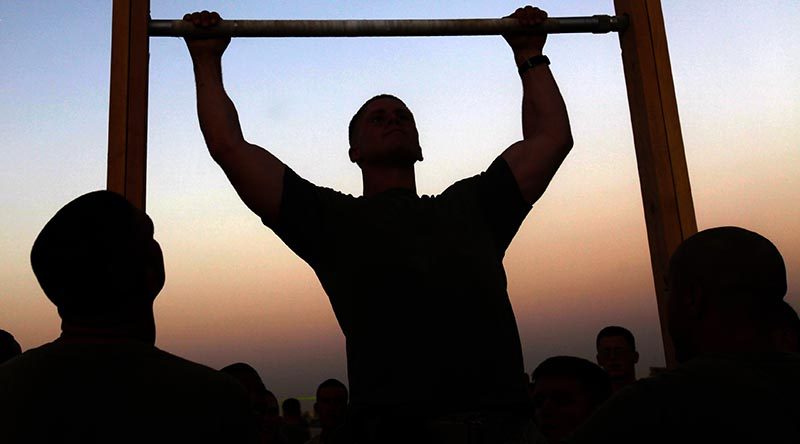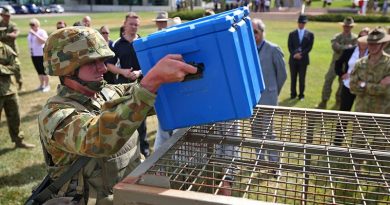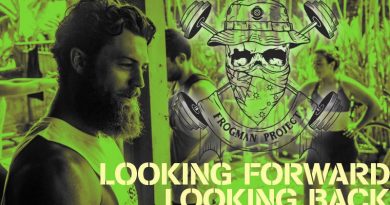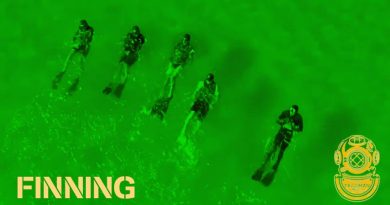Military Fitness – Part 42

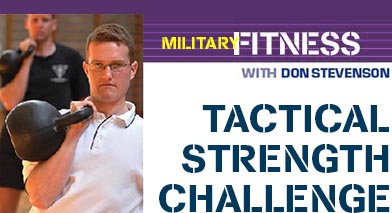
For anyone who is a member of the military or who wants to join, fitness tests are a well-known and often hated part of life.
In past issues of CONTACT I’ve covered several fitness tests including the BFA, beep test, PESA and the Special Forces entry test.
However, in this article I want to introduce a slightly different fitness test that provides great feedback on your overall level of tactical fitness and which can be used in a team setting as a friendly competition that allows personnel of different heights and weights to compete on a relatively level playing field.
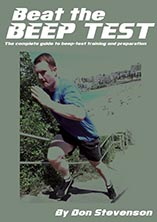 Beat The Beep Test by Don Stevenson is an 89-page complete e-guide to beep-test training and preparation.
Beat The Beep Test by Don Stevenson is an 89-page complete e-guide to beep-test training and preparation.
20% of proceeds from the sale of this e-book will be donated to Soldier On
The Tactical Strength Challenge
The fitness test is called the Tactical Strength Challenge and it was developed more than 10 years ago by Pavel Tsatsouline when he reintroduced kettlebells to the western world.
I’ll let Pavel describe the challenge and then we’ll look at the various aspects of the test and how to train for them.
“The Tactical Strength Challenge (TSC) is a strength competition consisting of three events; a three-attempt powerlifting deadlift; pullups for max reps; and, kettlebell snatches for max reps in five minutes.
“The Tactical Strength Challenge tests the three primary types of strength; absolute strength using the deadlift; bodyweight-relative strength with pullups; and, cardiovascular endurance through kettlebell snatches.
“The three events test a unique trade-off between these abilities. While larger participants may have an advantage in the deadlift, lighter participants have an advantage in pullups, and the kettlebell snatch tests all participants equally.”
There are several different divisions for the tes,t but the most popular divisions are the men’s open division (bodyweight pullups and 24kg kettlebell) and the women’s open division (bodyweight pullups and 16kg kettlebell). There are also elite divisions using heavier kettlebells and weighted pullups, and a masters division.
Scoring in the competition is based on rank in each of the three events and after your rank in each event is added to a final score then the lowest score wins.
Training for the TSC isn’t normally something that needs a great deal of focus if you are already on a solid tactical-strength and conditioning program.
Kettlebell swings and snatches, pullups and deadlifts are all foundation exercises of such programs and so, in theory, military personnel should be able to pull off a solid TSC result with little or no notice.
That said, the competition does have rules, so it is important to keep the following in mind when training for each event.
Deadlift
The only equipment allowed in the deadlift is a lifting belt and chalk.
You get three attempts and if you miss one attempt then you can’t reduce the weight.
When training, it is important to keep the reps relatively low, maximise the weight you can use (with correct form) and learn what sort of jumps you can make between attempts so that you can post a smooth opener a solid second attempt and then go for the win or a personal best on the final rep.
My preferred training scheme for deadlifts is one day per week of relatively heavy (80-90% 1RM) reps for 3-5 sets of 2-5 reps and then one day of either speed deadlifts at 60–70% 1RM or an alternate deadlift such as snatch-grip deadlifts.
As the competition gets closer, reduce the reps on the heavier sets.
Pullups
In the TSC, pullups are a very strict affair. You are only allowed to use an overhand grip – but you can choose thumbless or thumbs around the bar.
Each rep must start from a complete dead hang and is only counted when the neck or chest touches the bar.
Bad reps are not counted and if you miss three reps in a row your attempt is terminated.
No swinging or kipping is allowed.
Training for the TSC pullups should focus on two areas.
The first is controlled reps with a full extension and making sure that your neck or chest touches the bar.
While this may seem obvious, it is a major fault of a lot of people’s pullups!
I suggest multiple sets of very strict reps starting with a third to a half of your max reps and adding a rep each week while maintaining good form.
The other aspect to pullup training is building muscular endurance.
So, I recommend one session a week of band assisted pullups with multiple sets of assisted pullups that are 120-130% of your current rep max.
Snatch
Kettlebell snatch is a great test of endurance, grip-strength and toughness.
With five minutes on the clock, the secret to training for this is to learn to deal with the discomfort of going anaerobic.
Start your training with sets of 10 snatches each arm and work on a smooth technique that minimises the strain on your grip.
As your training progresses, increase the number of reps in each set and start to shorten the rests between sets.
Add 1-2 days per week of timed intervals.
As a goal, 100 reps in 5 minutes is a solid result, but it will take 125+ to be truly competitive.
Why not set your team-mates a challenge and run a TSC in the near future?
Full rules of the TSC can be found at www.strongfirst.com/achieve/tactical-strength-challenge-rules/
Good luck!
.
.
.
.
.
.

.
.

